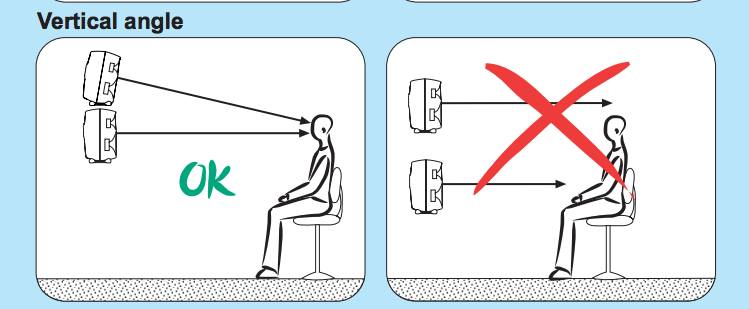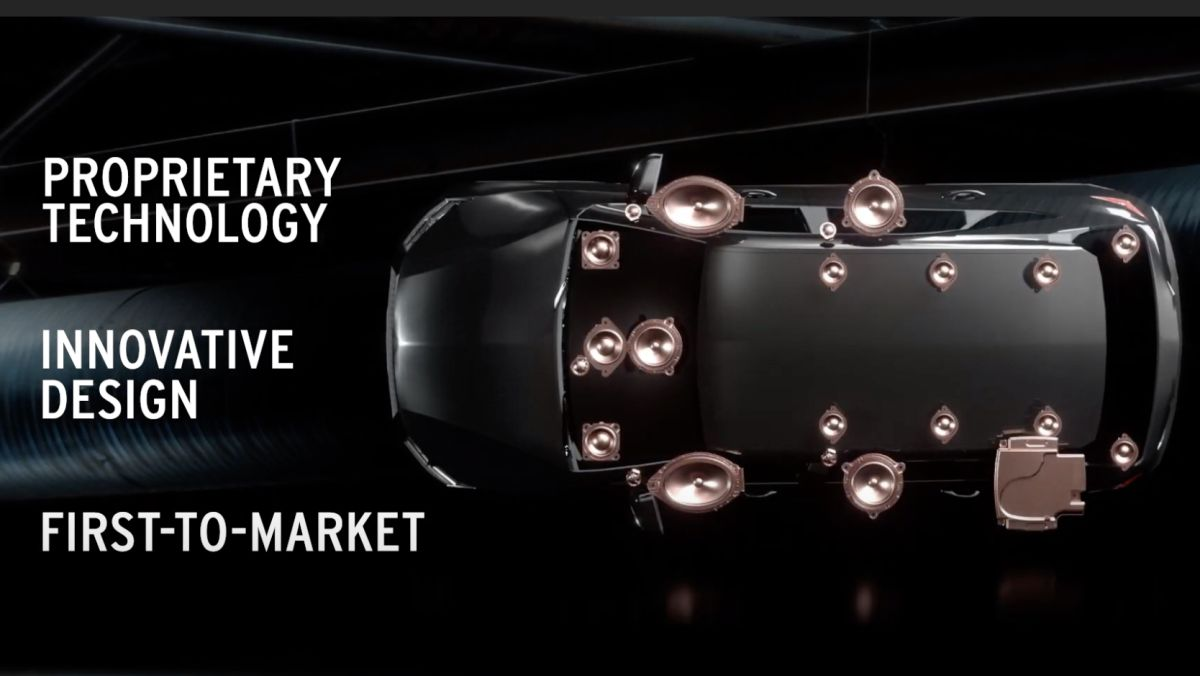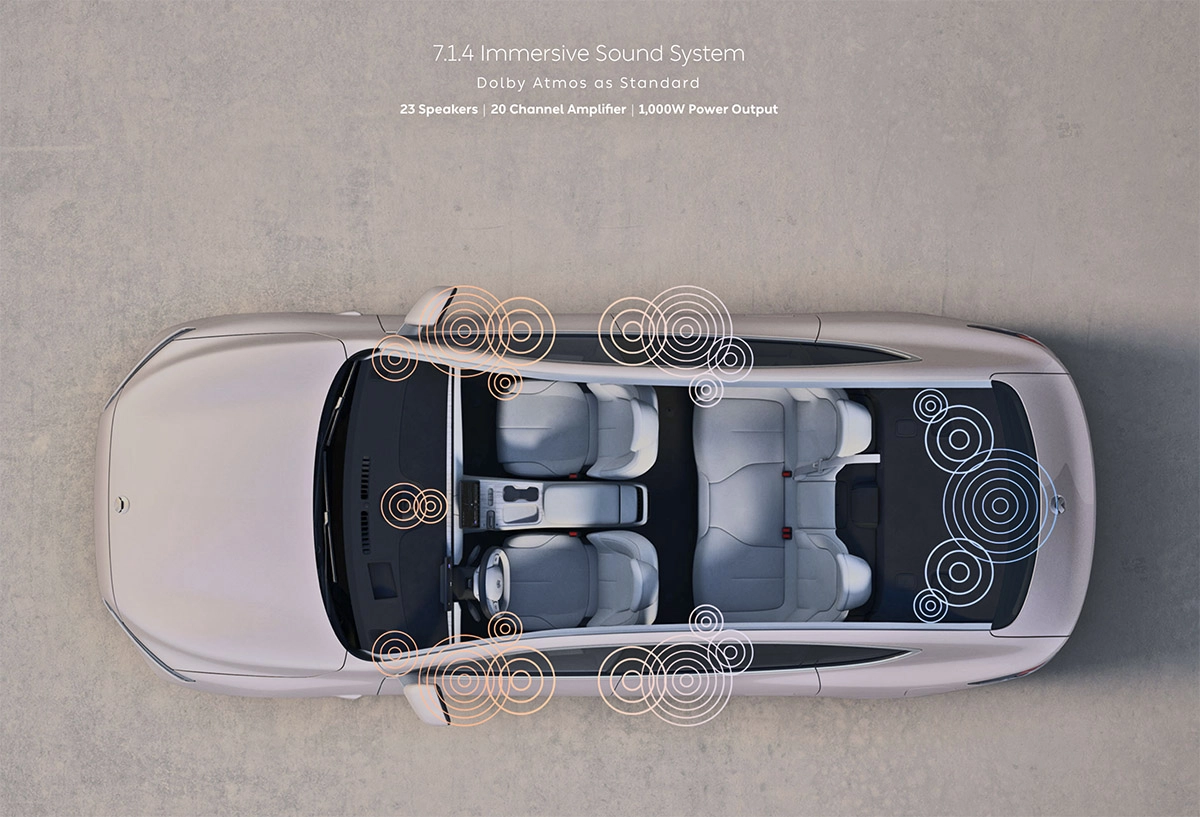Dolby Atmos 스피커 시스템은 아직 시기 상조다.
죄송하지만 혹시 Dolby Atmos 스피커 시스템을 갖추려고 생각하고 계신 분들은 멈춰주세요.
그리고 한번 이 글을 읽어주시기 바랍니다.
Dolby Atmos 같이 여러 위치에 많은 스피커를 설치하는 환경에서는 위성 스피커들을 일반적인 2-way 를 사용하는 것은 상당한 청각 오차를 불러 일으킬 수 있다는 생각이 듭니다.
일반적으로 우퍼가 아래 있고 트위터가 위에 있는 보통의 2-way 스피커는 청취자의 귀높이나 위치에 위해서 주파수 반응이 제각각입니다.
왜냐면 트위터와 우퍼가 귀에 도착하는 시간차가 듣는 위치에 따라 다 다르기 때문입니다.
기존 평면 음장인 5.1, 7.1등의 서라운드 음장은 스피커의 고저차에 대한 문제가 없기 때문에 일반적인 2-Way 스피커를 사용해도 충분하지만 천정 스피커가 존재하는 이머시브 음장에서는 이러한 부분들이 문제가 커지게 됩니다.
따라서 천정과 서라운드에 여러개의 스피커를 배치 해야하는 Dolby Atmos의 위성 스피커들은 동축 스피커를 사용해야 제대로 된 청취 환경이 만들어 질 수 있다고 판단됩니다. 1)
그런 동일 동축 유닛들로 천정과 서라운드를 구성하고 1개의 무지향성이 아주 강한 서브우퍼2)를 구현하는 것이 정답이라고 판단되는데요,
근데 아직 그런 스피커, 또는 그런 스피커 시스템이 나오지 않았습니다.
아직까지 제가 찾은 것은 Iloud mtm (가상 동축 방식 스피커)으로 구성하는 방법입니다. 특히 Dolby Atmos를 위해 80Hz 로우컷 기능도 최근 추가 되었습니다. 각각의 위성 스피커들에서 모두 80Hz 로우컷을 켜고 서브우퍼에서 하이 컷을 80Hz로 설정하여 사용하면 됩니다. 그러나 이 브랜드에는 이 스피커에 맞춰 나오는 서브우퍼가 따로 없습니다. 서브우퍼는 타 브랜드에서 찾아서 매칭해야 하는 문제점이 아직 남아 있습니다.3)
그래서 이것으로 구성하는 시스템을 생각해보려 하는데…… 하나의 문제가 더 튀어나옵니다.
그렇게 스피커를 구성했다면 기존 스튜디오 2.1 스피커 시스템은 보통 서브우퍼에 내장된 Bass Mangement를 사용하여, 기존 제품들의 Bass Management를 가지고 Dolby Atmos를 구성하기가 힘듭니다. Dolby Atmos 구성을 위해서는 Dolby Atmos 전용의 Bass Management DSP 프로세서가 필요하다고 판단됩니다. 아 물론 기존 2.1 이나 5.1도 따로 LFE 기능이 내장된 DSP 출력 프로세서를 사용할 수 있습니다. 그런 제품들도 이미 있습니다.
즉 Dolby Atmos는 전통적인 구성 방법으로는 안되고, 서브우퍼와 위성 스피커 간의 크로스오버를 구성 및 캘리브레이션 해주고, 위성 스피커에 각각의 채널의 소리를 전달할 DSP 프로세서 유닛이 있어야 한다는 것입니다.
지금 서브우퍼 유닛과 위성 스피커 간에 크로스오버 구성 안하고 그냥 Dolby Atmos 렌더러 출력에 직결한 시스템들은 정확한 모니터링 체크가 안되는 상황이라고 보시면 됩니다.
이러한 제품도 아직 마켓에는 없습니다.
아 그런 스피커 시스템이 장착된 자동차는 있더군요. 매우 비싼 유럽 브랜드 고급 차량들.
이 글을 읽고나서, Dolby Atmos 스피커 시스템을 기존 전통적 방식의 스피커 시스템으로 구성한 사람들은 이걸 대체 왜 한 것인가? 하는 회의감도 들 수도 있습니다. 돈이 아까워 질 수도 있습니다. 죄송한 마음을 금치 못하겠습니다.
아직 시장은 Dolby Atmos는 헤드폰을 통한 접근, 그리고 이머시브 오디오 쪽으로의 접근으로 방향을 잡고 있습니다.
스피커 시스템은 아직 기다려봐야 합니다.
아마 조만간 시장에 나오리라 예상은 됩니다. 다수의 동축 위성 스피커 세트 + 서브우퍼 + 전용 프로세싱 유닛
P.S 2024년 1월 Arturia 에서 DSP를 내장한 Dolby Atmos 전용의 오디오 인터페이스를 출시했습니다. * Arturia ORIA
Dolby Atmos speaker systems are still premature
I'm sorry, but if you're thinking of setting up a Dolby Atmos speaker system, please pause for a moment.
And please read this article.
In environments like Dolby Atmos, where many speakers are installed in various positions, I believe that using conventional 2-way satellite speakers can lead to significant auditory discrepancies. Typically, 2-way speakers with woofers at the bottom and tweeters at the top have varying frequency responses depending on the listener's ear height and position. This happens because the time difference at which the tweeter and woofer reach the ear varies depending on the listening position.
Traditional surround sound setups like 5.1 or 7.1 don't have issues with speaker height differences, so using regular 2-way speakers is sufficient. However, in immersive audio setups with ceiling speakers like Dolby Atmos, these issues become more significant.
Therefore, for Dolby Atmos' satellite speakers, which require multiple speakers to be placed on the ceiling and around the room, it's considered necessary to use coaxial speakers. These speakers should be identical coaxial units for both ceiling and surround positions, with the addition of a highly non-directional subwoofer to complete the setup.
However, such speakers or systems have not been released yet. The only solution I've found so far is to use the Iloud mtm (a virtual coaxial speaker). Recently, an 80Hz low-cut feature was added for Dolby Atmos use. You can enable the 80Hz low-cut on each satellite speaker and set the subwoofer's high-cut to 80Hz. However, the issue remains that there's no subwoofer available from the same brand to match these speakers. Therefore, you'll need to find a matching subwoofer from a different brand.
If you decide to create a system this way, another problem arises. With such a speaker setup, it becomes difficult to configure Dolby Atmos using the Bass Management of traditional studio 2.1 speaker systems. To set up Dolby Atmos, a dedicated Bass Management DSP processor is required. Of course, existing 2.1 or 5.1 systems with built-in LFE functionality can be used, and such products already exist.
In summary, Dolby Atmos cannot be configured using traditional methods. A system needs to be created with crossovers and calibration between the subwoofer and satellite speakers, as well as DSP processor units to deliver each channel's sound to the satellite speakers.
As of now, such products do not exist on the market. Connecting Dolby Atmos renderers directly to the subwoofer without configuring crossovers results in a situation where accurate monitoring checks are not possible.
However, such speaker systems are available in some high-end European car audio systems.
After reading this article, those who have set up Dolby Atmos speaker systems using conventional methods may wonder why they did it. They may feel that they have wasted money.
The market is still leaning toward approaches like Dolby Atmos via headphones and immersive audio. Speaker systems are still awaiting their turn.
They are expected to hit the market soon, most likely with sets of coaxial satellite speakers, a subwoofer, and a dedicated processing unit.


